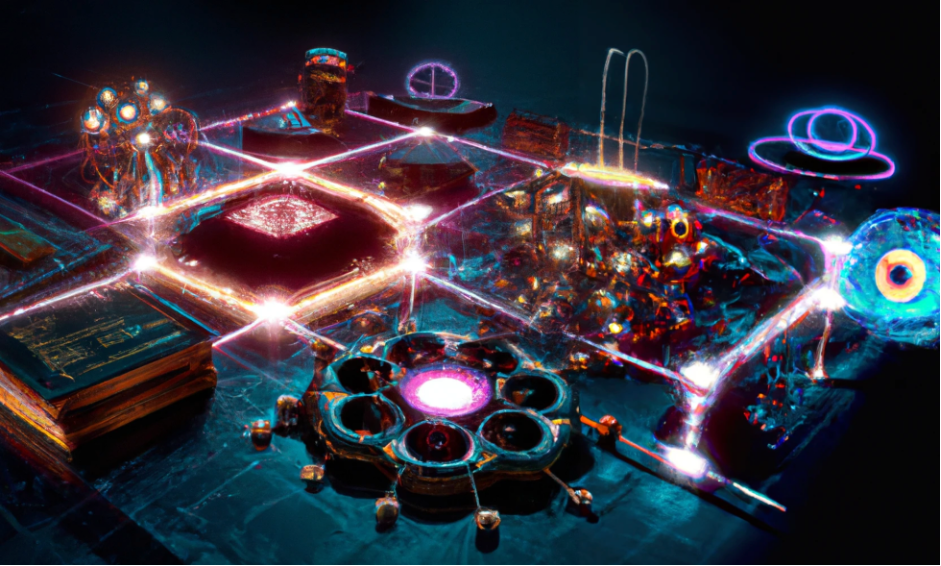Is my quantum computer better than yours?
Date:
Changed on 02/05/2024

Traditional computers store information in the form of sequences of “0s” and “1s” known as bits. Quantum computers, meanwhile, use quantum bits or qubits, zeros and ones which can be manipulated using the laws of quantum physics, particularly entanglement. Entanglement is a phenomenon in which two particles, such as photons for example, continue to share the same quantum properties, regardless of the distance between them.
Measuring a qubit will always yield either a “0” or a “1” - a discrete value - hence why a machine based on qubits is called a “discrete-variable quantum computer”. But researchers and companies have also been looking to develop “continuous-variable” quantum computers, that is, machines which store information in the form of continuous analogue signals. By measuring one of these signals, instead of obtaining either a 0 or a 1, one obtains a number that can take any value within an interval of real numbers.
Discrete-variable and continuous-variable quantum computers are capable of doing the same things and can rely on the same physical platforms such as trapped ions, photonics or superconducting circuits. But these two types of quantum computers do not work in the same way and each poses its own difficulties when it comes to implementation, making it difficult to compare the two. So how do we determine which quantum computer is more powerful, more promising or more efficient?
In order to answer these questions and to guide the development of quantum computers, a joint characterisation of the quantum properties responsible for their processing power must be found. If we want to compare the power of two computers, we have to be able to define the quantity of work they are capable of handling within a certain period of time. Performance levels of standard computers can easily be compared using criteria such as how many transistors they have or how much memory or RAM they have. With quantum computers, however, this becomes much more complex.
This is where the research carried out by Ulysse Chabaud and Mattia Walschaers comes in: when two types of quantum computers are developed using the same platform, a comparative method can be employed. To do this, Chabaud and Walschaers developed a mathematical framework which they call “the stellar formalism”. Stellar formalism describes quantum states using points, referred to as “stars”, and can be used to characterise two types of quantum computers and to quantify their power.
“For light-based quantum computers, for instance, the number of stars (or stellar rank) can be used to count the number of photons contributing to the computation. Our framework has also proved that a particular type of entanglement, which we refer to as non-Gaussian, is essential to the functioning of quantum computers”, explains Ulysse.
Stellar formalism provides an effective way to approach quantum computing because it allows different quantum states (described as “constellations” of points) to be sorted, and thus quantify their usefulness. In creating this mathematical tool, Ulysse Chabaud took inspiration from Roy Glauber’s pioneering research in quantum mechanics, and his theory of coherence which allows photodetection.
“Glauber’s mathematical tools were well-suited for comparing the quality of two quantum computers. Not only does this comparative framework open up new opportunities, but it also provides a way of formulating a whole host of new research questions that will help to design the quantum computers of the future”, explains Ulysse.
“From a technical perspective, how can the power of a quantum computer be measured? A natural way would be to determine the most complex computation that this computer is capable of. A quantum computation corresponds to the measurement of a quantum state. But a central problem in comparing calculations made by different quantum computers is the fact that quantum properties, which are behind computational complexity, can be introduced either by the quantum state or by the measurement apparatus. Different measurements of a light beam, for example, such as counting the number of photons (discrete-variable measurement) or measuring the electrical field (continuous-variable measurement) can result in different quantum properties. In order to solve this problem, we use the stellar rank to characterise both states and measurements. As has been formally proven, the stellar rank bounds the complexity of a quantum computation and, by extension, the power of the quantum computer which made that calculation. To obtain to this result, we combined theoretical tools from physics (quantum optics) and computer science (computational complexity theory).”